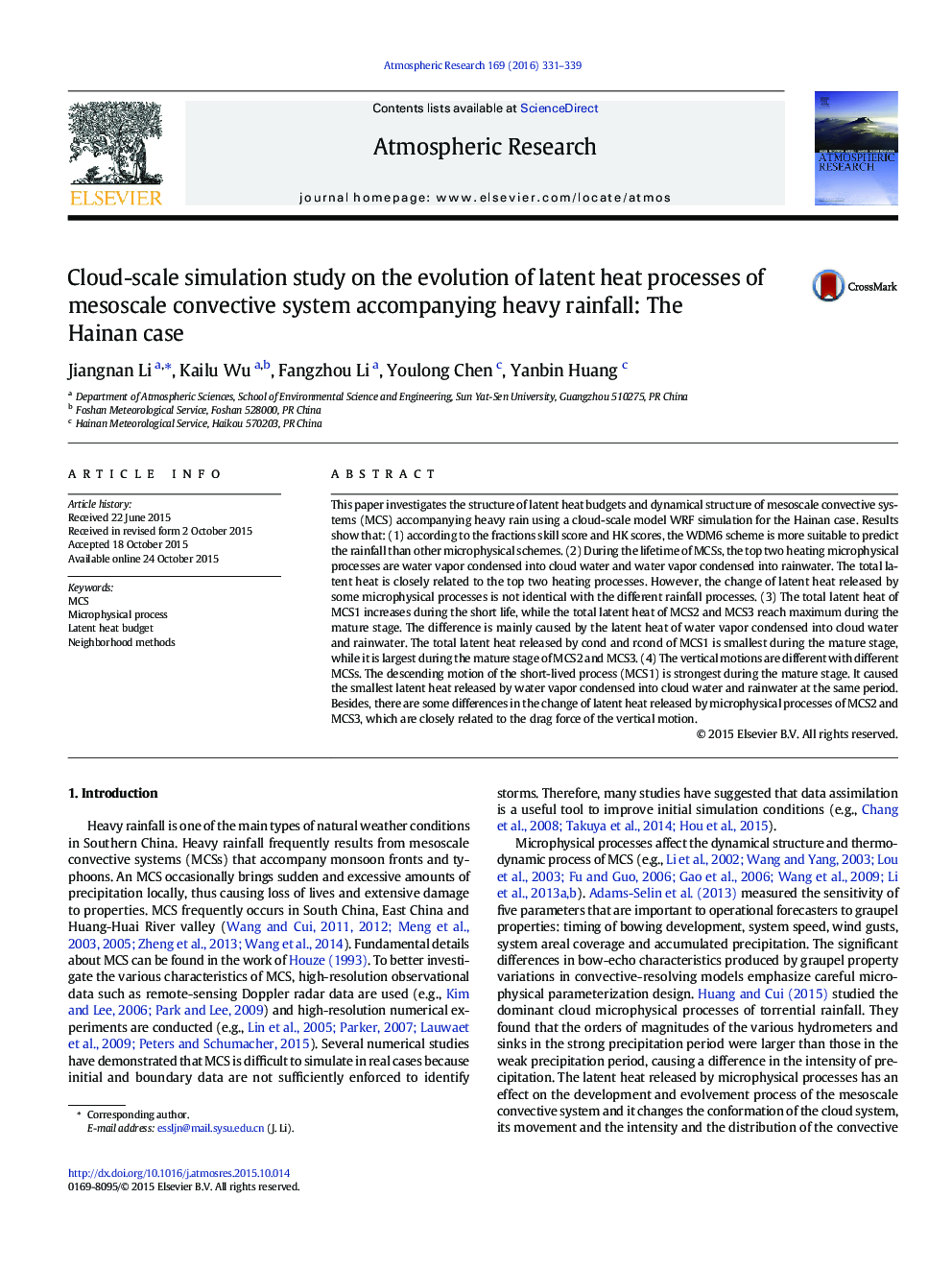| کد مقاله | کد نشریه | سال انتشار | مقاله انگلیسی | نسخه تمام متن |
|---|---|---|---|---|
| 4449711 | 1311647 | 2016 | 9 صفحه PDF | دانلود رایگان |
• The successful simulation of the rainstorm case was conducted by WRF.
• The three-dimensional structure of latent heat budgets and dynamical structure of MCS have been examined.
• Water vapor condensed into cloud water and water vapor condensed into rainwater during all stages of MCS make great contributions.
• The dynamical structures are different with different MCSs.
This paper investigates the structure of latent heat budgets and dynamical structure of mesoscale convective systems (MCS) accompanying heavy rain using a cloud-scale model WRF simulation for the Hainan case. Results show that: (1) according to the fractions skill score and HK scores, the WDM6 scheme is more suitable to predict the rainfall than other microphysical schemes. (2) During the lifetime of MCSs, the top two heating microphysical processes are water vapor condensed into cloud water and water vapor condensed into rainwater. The total latent heat is closely related to the top two heating processes. However, the change of latent heat released by some microphysical processes is not identical with the different rainfall processes. (3) The total latent heat of MCS1 increases during the short life, while the total latent heat of MCS2 and MCS3 reach maximum during the mature stage. The difference is mainly caused by the latent heat of water vapor condensed into cloud water and rainwater. The total latent heat released by cond and rcond of MCS1 is smallest during the mature stage, while it is largest during the mature stage of MCS2 and MCS3. (4) The vertical motions are different with different MCSs. The descending motion of the short-lived process (MCS1) is strongest during the mature stage. It caused the smallest latent heat released by water vapor condensed into cloud water and rainwater at the same period. Besides, there are some differences in the change of latent heat released by microphysical processes of MCS2 and MCS3, which are closely related to the drag force of the vertical motion.
Journal: Atmospheric Research - Volume 169, Part A, 1 March 2016, Pages 331–339
